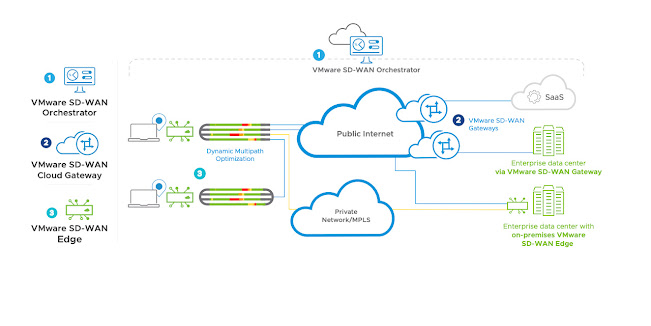NAT, PAT, What ?!: Part 1: Policy NAT
When teaching or discussing VMware SD-WAN features, even with some experienced People, when it comes to NAT, PAT and specific Policy NAT, then I often experience that unless needed no one takes care about that feature.
So let me explain in this Blog Policy NAT from the SD-WAN aka Customer side.
Let's start with the involved components.
Partner Gateway
A
Partner Gateway connects Overlay Customer/Segment Traffic via Handoff
Interface to per Customer/Segment separate connectivity using a
mechanism known as VRF Lite.
But you can also use that mechanism to Handoff all customer traffic to the same destination
However customers often use Private non-unique addresses in their SD-WAN environment.In
that case we need a Source-NAT (SNAT) mechanism to translate the
Customer addresses to a unique routable address before reaching the
shared destination network.
But where is that SNAT address defined? A Service Provider typically will avoid custom specific NATting on its Provider Edge (PE) Router, as it is difficult to maintain and deviates from standard configuration policy.
This is where NAT section on Business Policy Rules comes into play.
When the destination routes of a provider shared ressource are primarily learned (static or via BGP) via a Partner Gateway with Handoff defined, traffic will be source NATted as it is leaving the Gateway via the customer/segment specific VRF interface.
NOTE: Destination need to be set to Internet to make the NAT enable Button selectable.
Now you know a little bit more about one of the many clever mechanisms of the VMware SD-WAN implementation.







Comments
Post a Comment